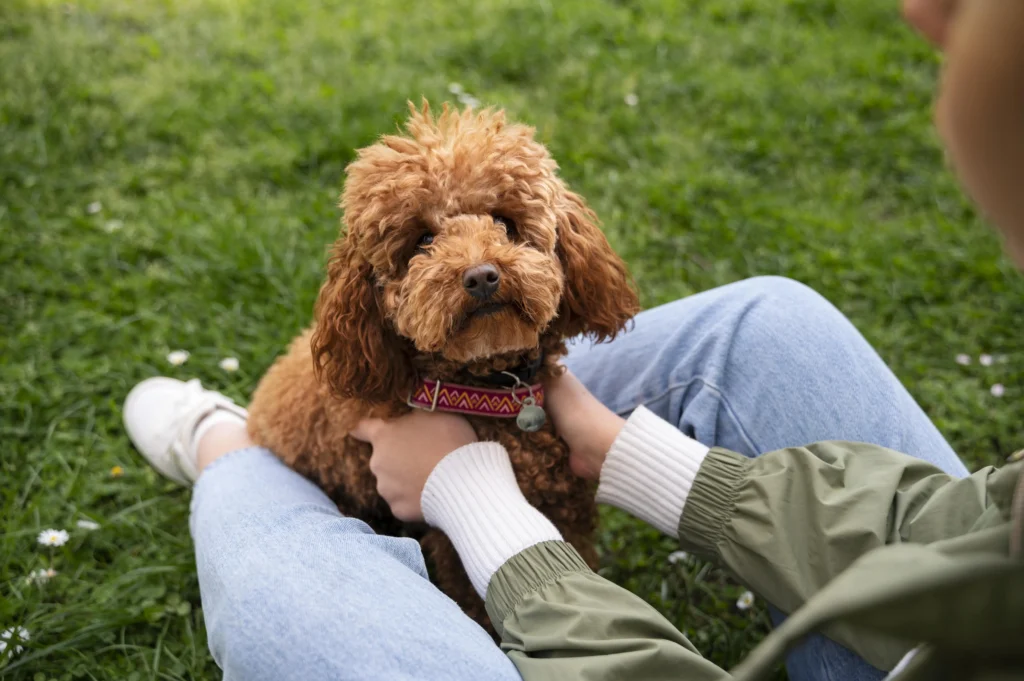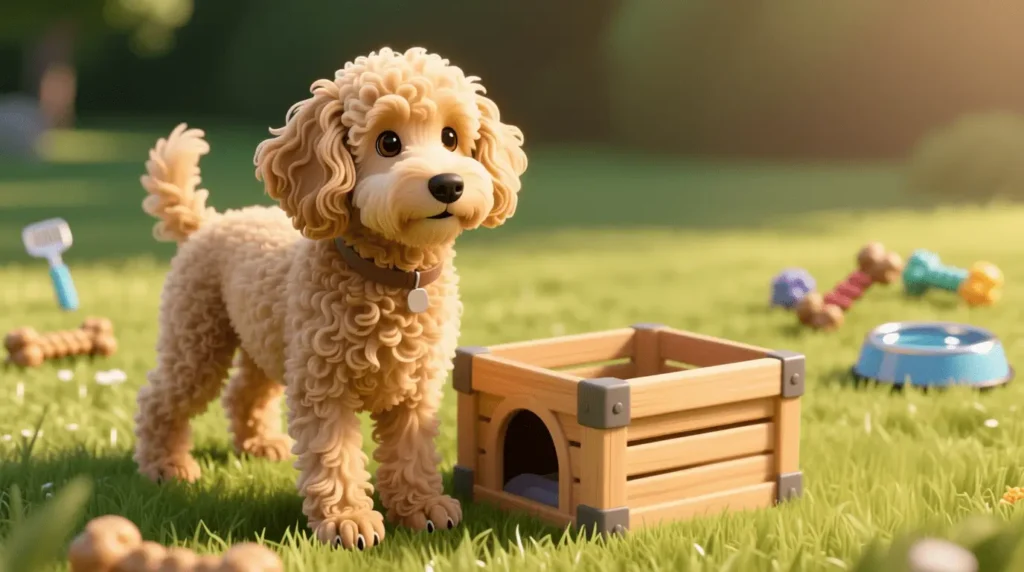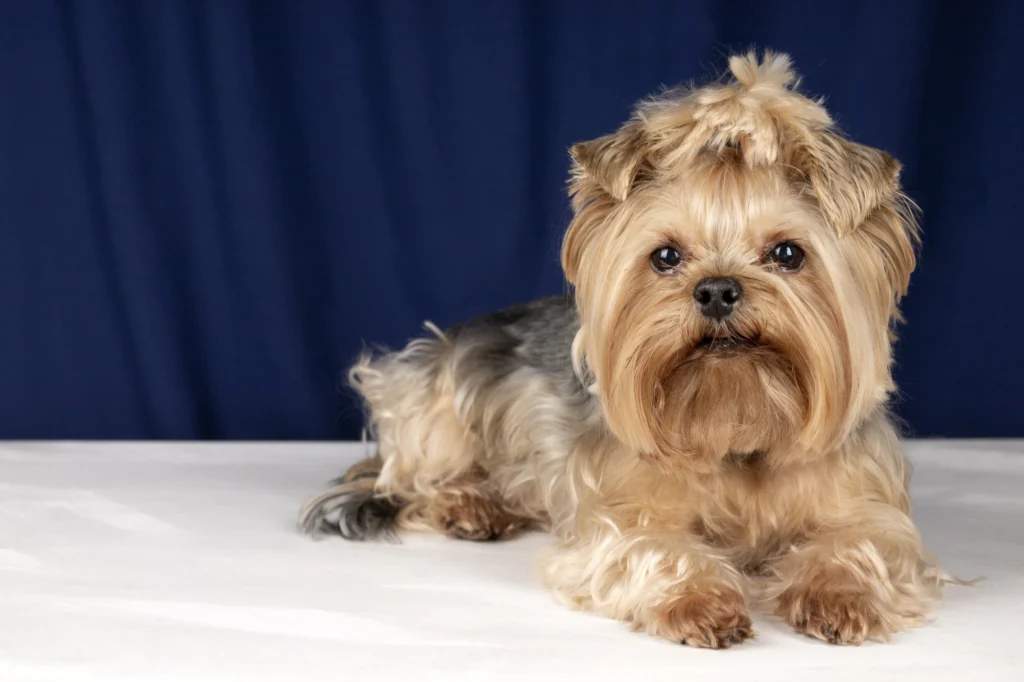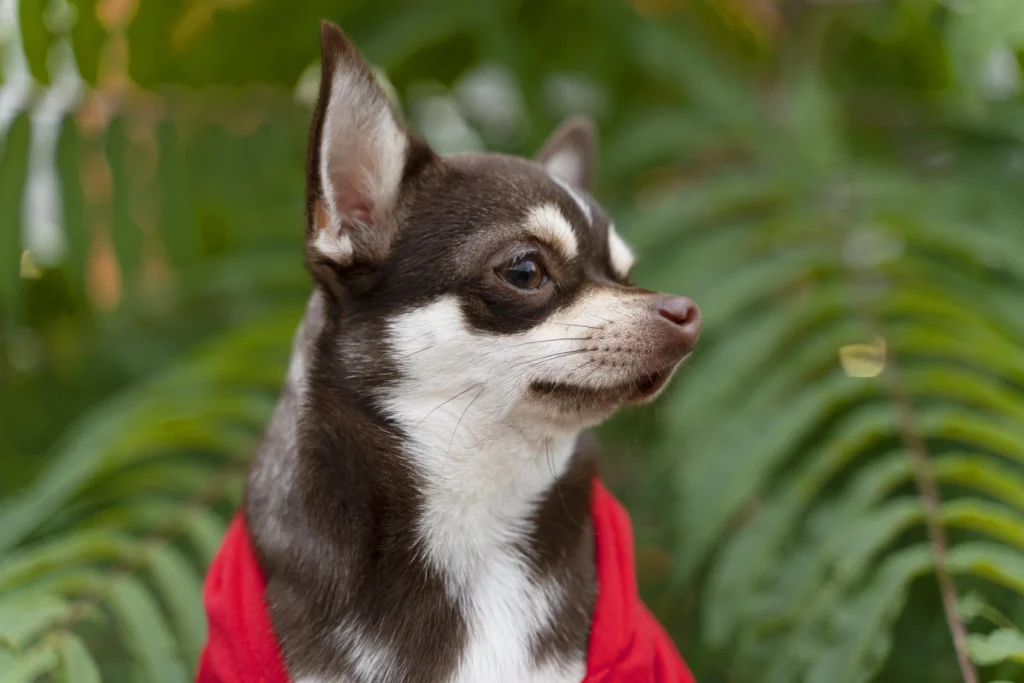| Trait | Details |
|---|---|
| Breed Type | Designer (Labrador Retriever × Poodle) |
| Origin | Australia, 1980s |
| Size | Mini (15–25 lbs), Medium (30–45 lbs), Standard (50–65 lbs) |
| Lifespan | 12–15 years |
| Temperament | Intelligent, affectionate, playful |
| Coat Types | Wool, fleece, or hair (varies by generation) |
| Shedding Level | Low to moderate |
| Best For | Families, first-time owners, therapy and service work |
Introduction: Why Everyone Loves the Labradoodle
Few dogs have captured hearts quite like the Labradoodle — a cross between the Labrador Retriever and the Poodle. Originally bred to create a hypoallergenic service dog, the Labradoodle has since become one of the most popular family pets worldwide. With their cheerful energy, loving personalities, and often low-shedding coats, these dogs offer the best of both breeds.
Whether you live in a city apartment or a suburban home with a yard, the Labradoodle adapts remarkably well — provided they get the love, attention, and exercise they crave.fbre
History and Origin
The Labradoodle was first bred in the late 1980s by Wally Conron of the Royal Guide Dog Association of Australia. His goal was to create a guide dog suitable for a client whose spouse was allergic to dogs. The result a Labrador-Poodle cross changed the course of modern dog breeding.
Since then, Labradoodles have been developed globally, especially in the U.S. and U.K., often through multi-generational breeding programs to stabilize temperament and coat type.
Appearance and Size
Labradoodles come in three size categories:
- Miniature: 15–25 lbs (ideal for small apartments)
- Medium: 30–45 lbs (balanced energy and size)
- Standard: 50–65 lbs (best for active families)
Their coats vary widely from curly Poodle-like fleece to straight Labrador hair. Common colors include cream, gold, chocolate, black, and apricot.
Temperament and Personality
One of the Labradoodle’s strongest traits is its friendly, intelligent, and people-oriented nature. They’re affectionate and love to be part of family activities. Their intelligence (thanks to both parent breeds) makes them quick learners perfect for obedience training, therapy work, and agility sports.

Key traits:
- Highly social
- Great with children and other pets
- Eager to please
- Playful yet gentle
However, Labradoodles can be prone to separation anxiety if left alone too often — they thrive on companionship.
Exercise and Activity Needs
Being a mix of two energetic breeds, Labradoodles need at least 60 minutes of daily exercise. This can include:
- Walks and outdoor playtime
- Fetch and swimming
- Dog parks and agility games
Mental stimulation is equally important — puzzle feeders and scent games prevent boredom and destructive behavior.
Training and Intelligence
Labradoodles are among the most trainable crossbreeds. Start training early with positive reinforcement (treats, praise, consistency). They excel in:
- Basic obedience
- Advanced commands
- Therapy/service training
Because they’re eager to learn, even first-time owners often find training enjoyable. Socialization during puppyhood is crucial to prevent overexcitement around new people or pets.
Health and Lifespan
Labradoodles generally live 12–15 years. Common health concerns include:
- Hip and elbow dysplasia
- Progressive retinal atrophy (PRA)
- Allergies and skin sensitivities
- Ear infections (due to floppy ears)
Regular vet checkups, a balanced diet, and proper grooming help prevent most issues.
For preventive care tips, visit our Dog Health Care guide.
Grooming and Coat Care
While many Labradoodles are advertised as “hypoallergenic,” no dog is completely allergy-free. Shedding levels vary by coat type:
- Wool coat (curly): Least shedding, most allergy-friendly
- Fleece coat (wavy): Soft and manageable
- Hair coat (straight): May shed more like a Labrador
Grooming tips:
- Brush 2–3 times a week
- Trim every 6–8 weeks
- Clean ears regularly
- Bathe monthly or as needed
A professional groomer experienced with Poodle mixes can recommend the best cut for your dog’s coat.
Nutrition and Diet
Labradoodles thrive on high-quality, protein-rich diets. Feed according to age, size, and activity level. Avoid fillers like corn or soy.
Average feeding amounts:
- Miniature: 1–1.5 cups daily
- Medium: 2–2.5 cups daily
- Standard: 3 cups daily
Explore our Dog Food Recommendations for more details.
Labradoodle vs Goldendoodle vs Poodle
| Feature | Labradoodle | Goldendoodle | Poodle |
| Origin | Labrador × Poodle | Golden Retriever × Poodle | Purebred |
| Coat Type | Wool, fleece, or hair | Curly or wavy | Curly |
| Temperament | Playful, friendly, loyal | Gentle, affectionate | Intelligent, independent |
| Exercise Needs | High | High | Moderate |
| Hypoallergenic | Low–Moderate | Moderate–High | High |
Living with a Labradoodle
Whether in a city apartment or spacious suburban home, Labradoodles adapt as long as their physical and emotional needs are met. They’re excellent for:
- Families with kids
- Active singles or couples
- Seniors seeking companionship
Consistent routines and affection help them thrive.
FAQs: Do Labradoodles Shed?
1. Do Labradoodles shed?
Yes, Labradoodles do shed, but far less than many breeds. The amount depends on coat type wool-coated Labradoodles shed the least.
2. Do Labradoodle puppies shed?
Yes, all puppies shed their puppy coat as adults. Expect light shedding around 6–9 months.
3. Do Australian Labradoodles shed?
Australian Labradoodles (multi-generation crosses) are bred for low-shedding, allergy-friendly coats.
4. Do Labradoodle dogs shed a lot?
Not usually. Regular brushing and grooming minimize shedding and dander buildup.
Conclusion
The Labradoodle combines the intelligence of the Poodle with the affectionate loyalty of the Labrador, creating a companion that’s as joyful as it is loyal. With proper care, exercise, and love, this breed brings warmth and laughter to any home.Learn more about other breeds at our Dog Breeds Library


